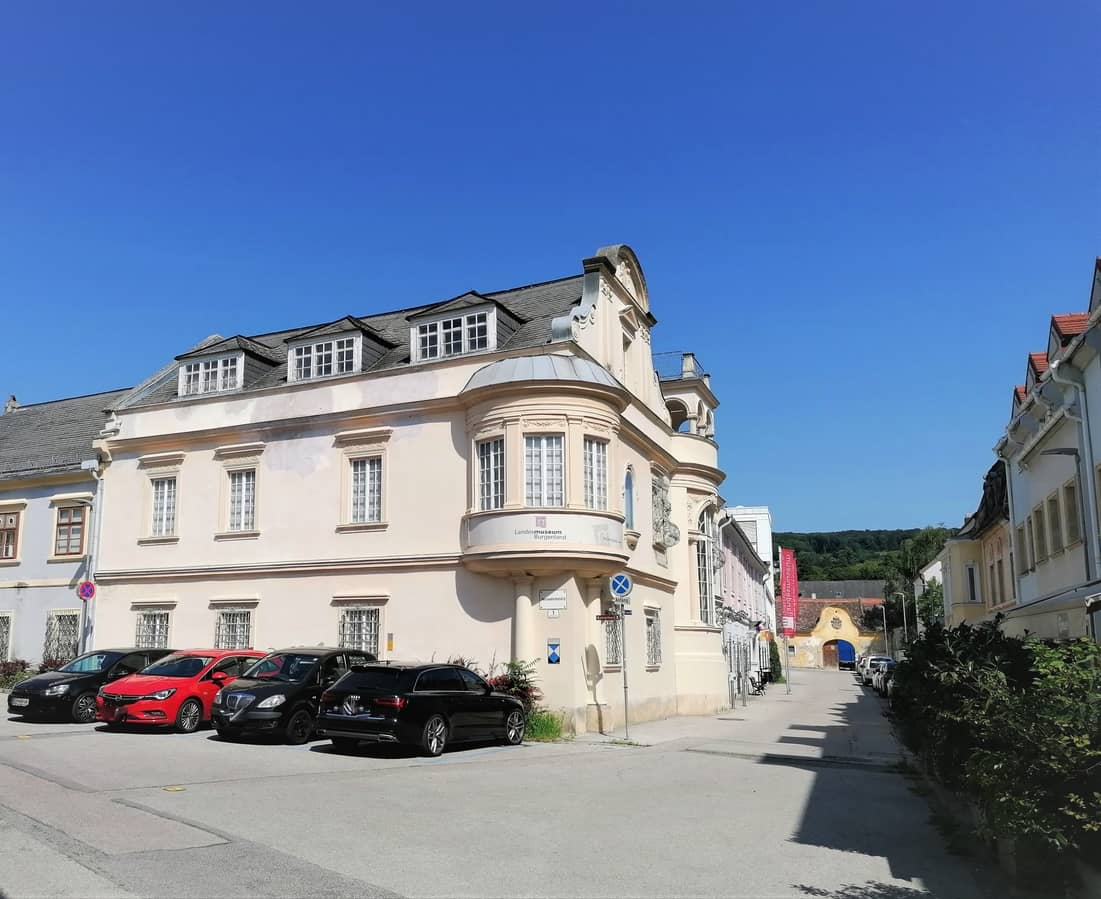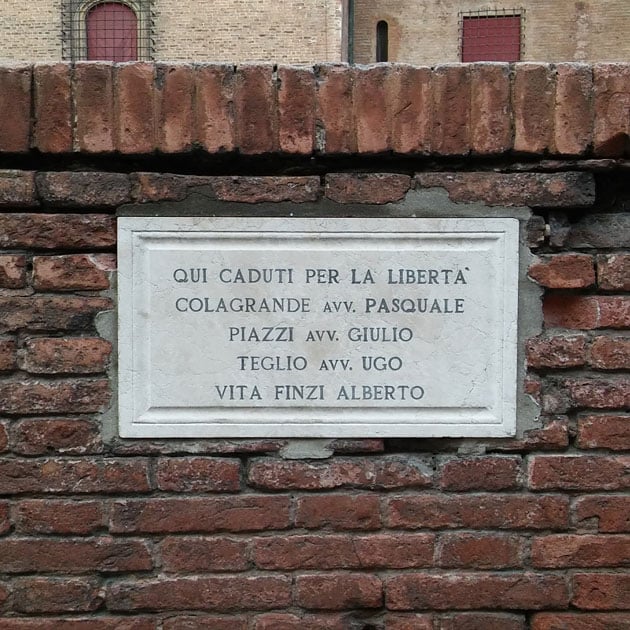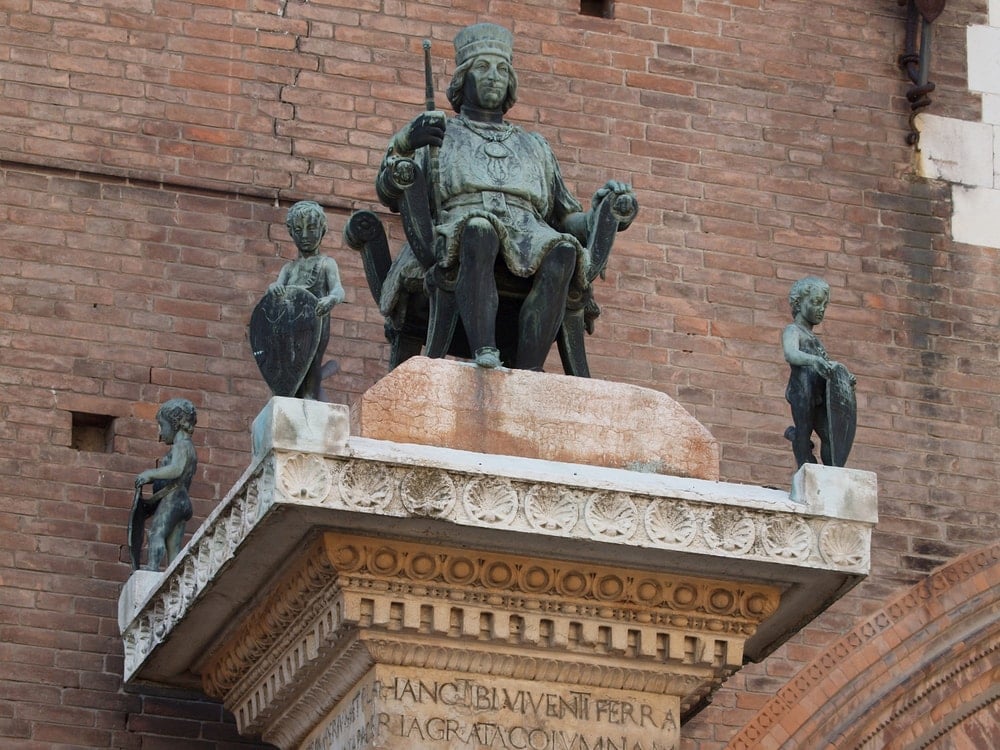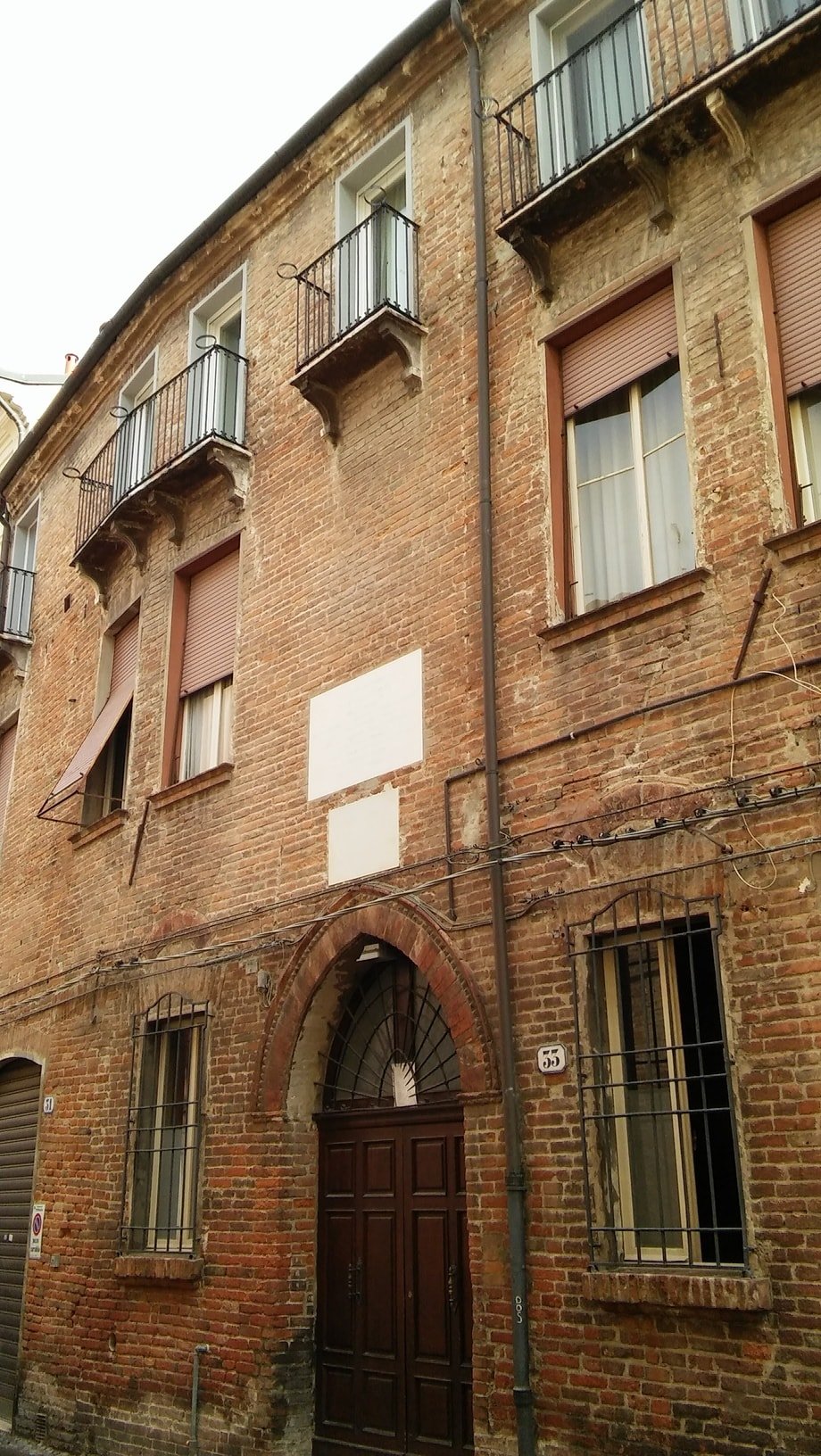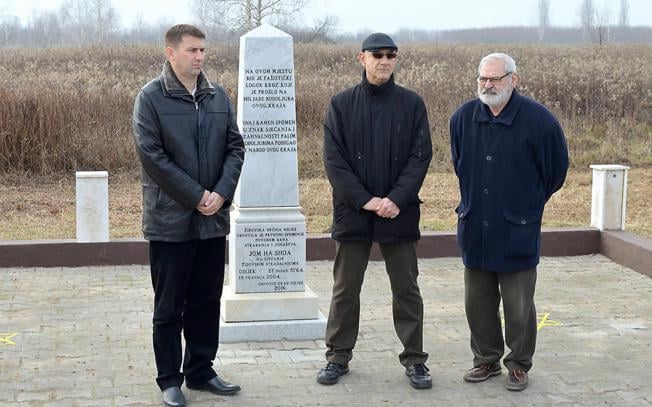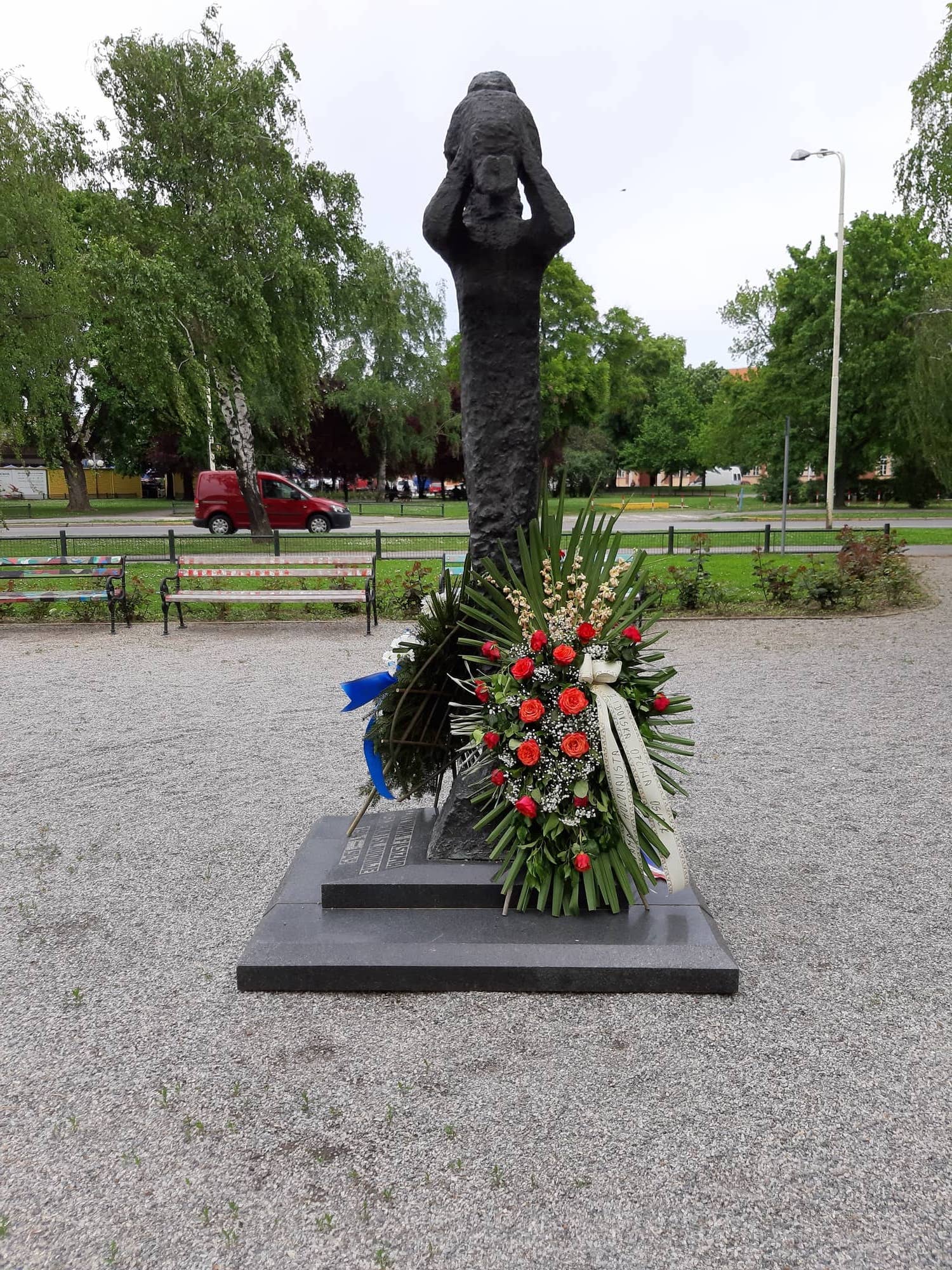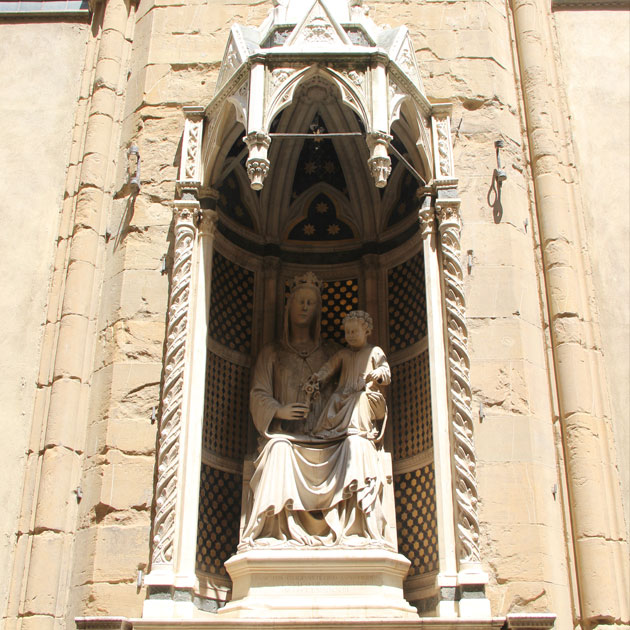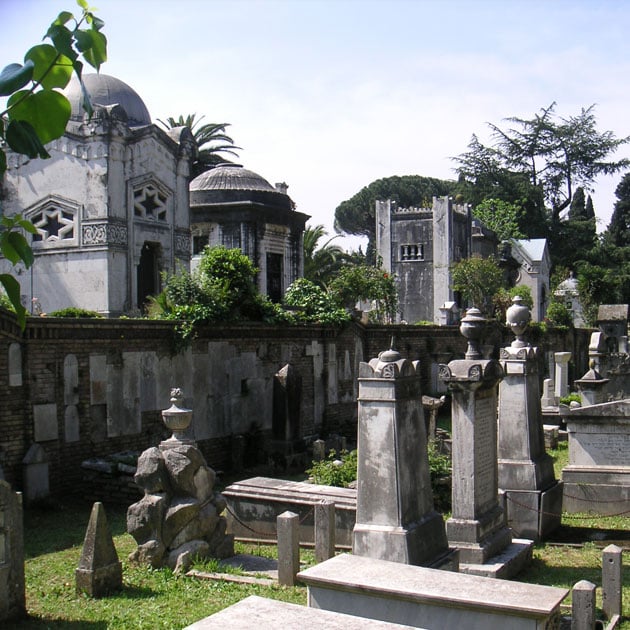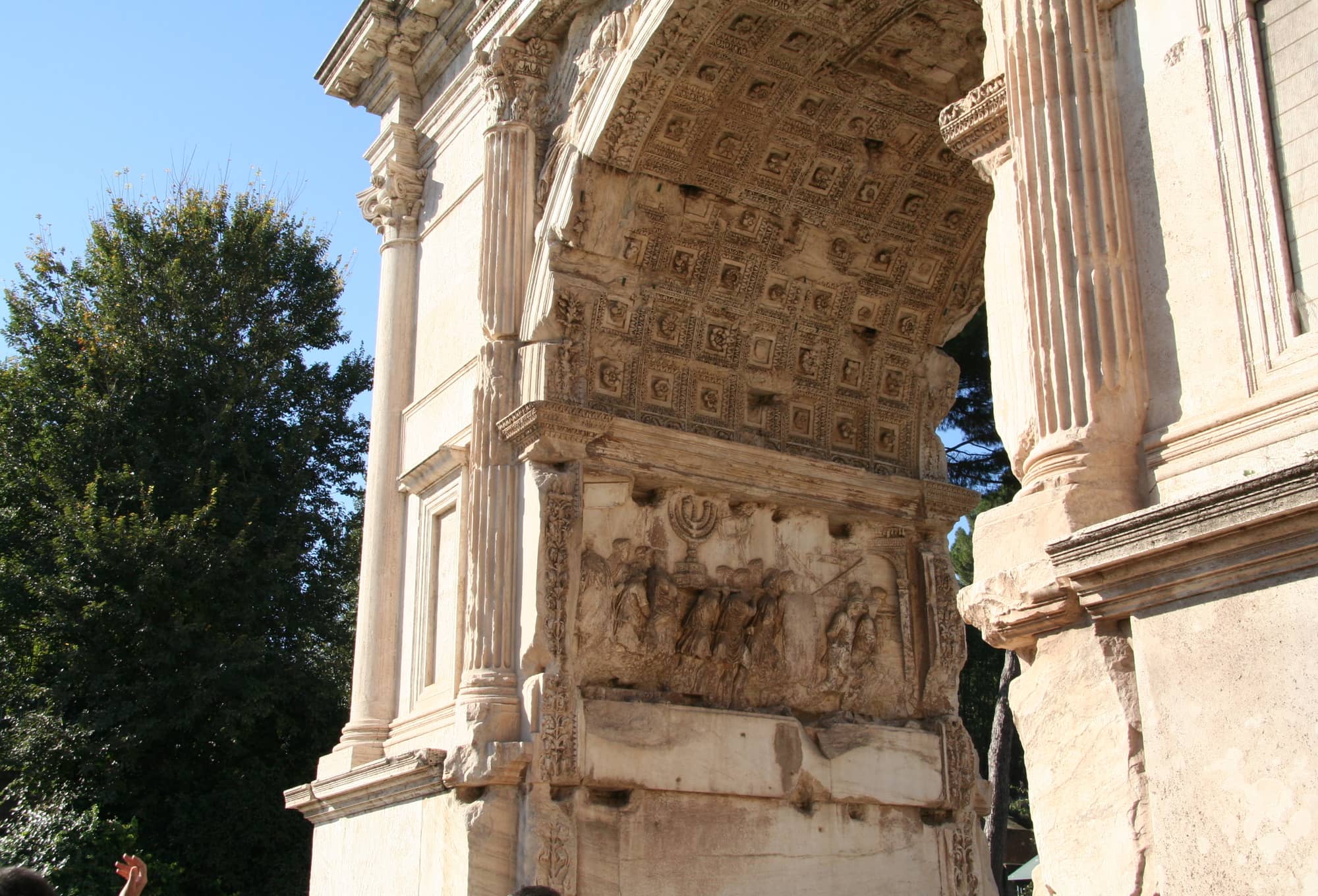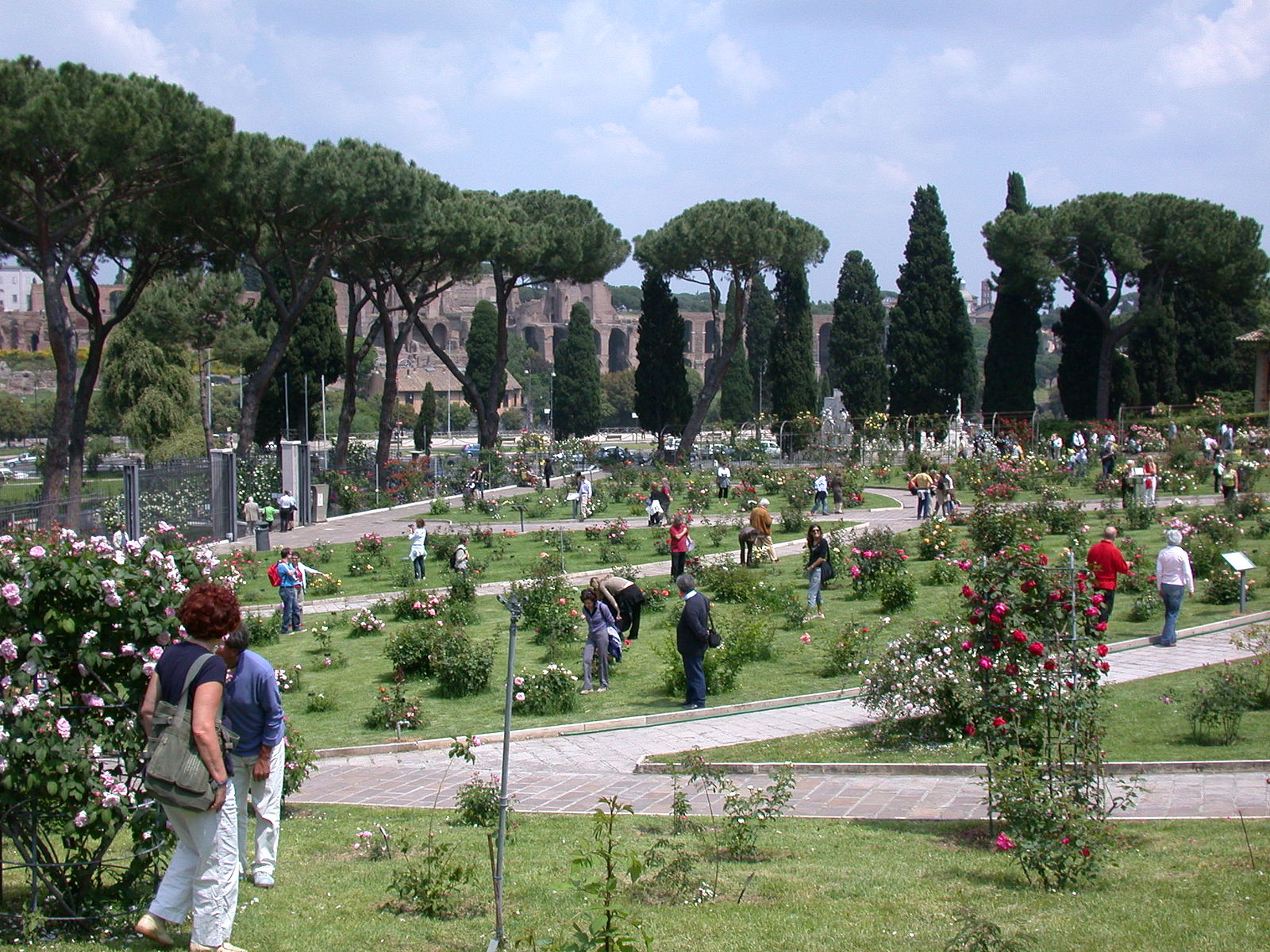The Sándor Wolf Memorial Room is located in this museum and was established in honour of Sándor Wolf, who is considered to be the founding father of the State Museum of Burgenland. Lore Lizbeth Waller was a grandniece of Sándor Wolf. She talks about her summer stays in this house at the video channel of the Research Society Burgenland (http://www.forschungsgesellschaft.at/interviews/eisenstadt.html).
Site Tag: Memorial
Plaques Commemorating the Este Castle Massacre
There are four plaques along the low moat wall surrounding the Este’s Castle placed in memory of the massacre that took place on November the 15th, 1943. Eleven people selected among Jews and political opponents held in the jail via Piangipane were brutally murdered in retaliation for the assassination of the Fascist Federal, a member of the party re-established after the of 8th of September armistice. Eight of them were slaughtered near the Castle and two on the San Tommaso Bastion, where a memorial stone commemorates them. An eleventh victim, probably a witness trying to flee, was murdered in Via Boldini not far from the Castle. Their bodies were left there till the following morning as a warning.
After the war, the street was renamed Corso Martiri della Libertà when the plaques were put in place. In his short story “Una notte del ’43” (A Night in 1943), the writer Giorgio Bassani wrote about the Corso Roma massacre through the eyes of a pharmacist living opposite.
The Column of Borso d’Este
The column of Borso d’Este dates back to 1452: a squat bi-chrome marble column built as the base for a statue of the duke on his throne. Along with the monument to Marquis Niccolò III, it marks the entrance to what was historically the ducal court, through the “Volto del Cavallo” (the Horse’s Vault) archway.
It was damaged by a fire and restored in 1718 using marble taken from the tombstones in the Jewish cemeteries. The circumstances surrounding the event have never been fully understood: there are records of a sort of payment made to the Jewish community for the material, there is no mention of the fact that tombs were violated to build one of the city’s hallmarks.
It was reinforced in 1960 during which time it was possible to photograph and study the inscriptions, before the monument was reassembled.
Isacco Lampronti’s House
The house in Via Vignatagliata 33 was home to Isacco Lampronti (1679-1756), a Rabbi, medical doctor and philosopher who lived there. Lampronti was a preeminent figure in Ferrara’s Jewish history, he was a teacher and president of the Rabbinical Academy, and practiced the medical profession alongside his other intellectual pursuits. His name is associated with the Paḥad Yiṣḥaq (‘the Fear of Isaac’), an encyclopaedia of Talmudic laws and the subsequent responsa (answers), many of which were his or by his teachers, pupils and colleagues. The author continued to work on the book throughout his life, and had it published as an old man. The whole twenty volume collection was printed at the end of the 19th century, almost 130 years after the author’s death.
We do not know which grave is Lampronti’s because for years there was Church ban on placing tombstones, and the Ferrara’s Jewish cemetery was also looted at the time. In 1872 a plaque was placed at his home in Via Vignatagliata, and in 1957, the town council added a second commemorative plaque to his house to mark the bicentenary of his death, as well as naming the small square connecting Via Vittoria and Via Vignatagliata after him. The Jewish community also placed a plaque in his memory in the main hall of the former Italian Synagogue.
Memorial to the Victims of Holocaust at Tenja Camp
The Memorial to Jewish Victims, first erected after WW II by communist authorities as a memorial to victims of fascism, was rebuilt in 2004 by the City of Osijek to mark the place of the transit camp established in 1942.
Humanity’ Monument Holocaust Memorial
The sculpture was created by famous British sculptor Oscar Nemon. It was errected in one of the city centre squares as his gift to his hometown.
Tabernacle of the Virgin Mary
On the side of the Church of Orsanmichele, in the penultimate niche on Via de’ Lamberti, is the tabernacle of the Virgin. It is connected with an act of intolerance which took place in 1493, when a Jew was accused of having vandalized the face of the Virgin Mary, a 14th century work by Giovanni Tedesco, and was subsequently executed. The inscription on the sculpture’s plinth reads: “Hanc ferro effigiem petiit iudaeus et index / ipse sui vulgo dilaniatus obit / MCCCCLXXXXIII”.
Verano Monumental Cemetery
The Verano Cemetery was established during the Napoleonic rule (1808-1814), and has a Jewish section since 1895. The entrance on Via Tiburtina joins the avenue that leads to the burial chapel (tempietto). On 16 October 1952, a stone monument commemorating Roman deportees by architect Angelo Di Castro was placed in front of it. On the back the Memorial to the Jews who died in Libya, by Eddy Levy and Massimiliano Beltrame, unveiled in 1977.
Numerous funerary monuments are noteworthy. They illustrate the changing social condition of the local Jews and are a key to the understanding of the prestige attained by various families. A world away from the more modest, austere graves of Jewish tradition, the Jewish cemetery is filled with decorations and figures, some of an allegorical nature, some depicting the deceased themselves. In line with the design of the time, there are eclectic tombstones with historic and oriental touches; sometimes one can make out references to the architecture of the new synagogues, such as in the Campos family chapel, designed by 1909 by Marcello Piacentini with clear references to the Tempio Maggiore.
Arch of Titus
The majestic triumphal arch is dedicated to the Emperor Titus and was constructed in the years following his death in 81 CE. The monument celebrates his victory over Jerusalem in 70 CE. and the annexation of Judaea to the Roman Empire.
A depiction of the divinization of the emperor, shown flying upon an eagle can be seen at the centre of the coffered soffit. On either side of the archway are reliefs with scenes of his triumph. On one side they show the entrance of Titus, and his coronation, surrounded by allegorical figures; on the other, the procession going through the triumphal arch, carrying the spoils looted from the destroyed Temple: among them the menorah, the large seven-branched candlestick stands out.
Roman Jews would always refuse to walk under this archway. It was only after the birth of the State of Israel that they crossed it, but this time in the opposite direction to that of the triumphal procession.
Municipal Rose Garden
The Municipal Rose Garden at the foot of the Aventine was once the Jewish cemetery, prior to its transfer to the Campo Verano.
The previous cemetery at Porta Portese had been abandoned, having been fenced off and reduced in 1587 and eventually seized. A new site at the foot of the Aventine Hill was purchased, expanded several times, and remained operational from 1645 to 1895.
However, in 1934 the Jewish Community was forced to sell the now unused burial ground because of the plan to free the Circus Maximus and open up Via di Valle Murcia. Three hundred and seventy-two tombs and several monuments from the more recent section were transferred to the Campo Verano.
In memory of this place’s previous identity, the pathways of the Rose Garden were laid out in the shape of a menorah, the concentric seven-branched candlestick described in the Bible as being among the ritual ornaments Temple of Jerusalem. The Community also decided to honour the memory of the former Jewish cemetery by placing a stone with the Tables of the Law near the entrance.
